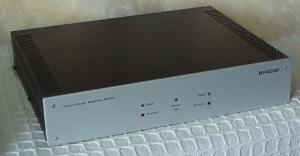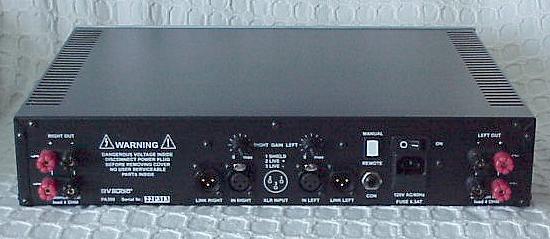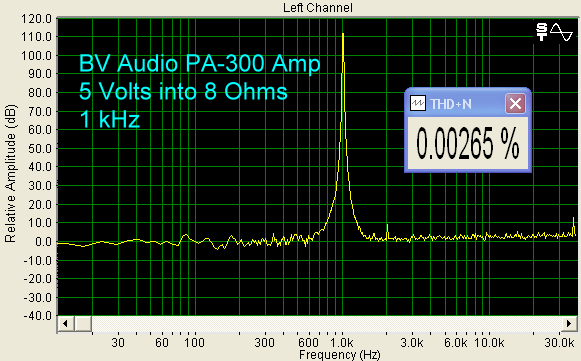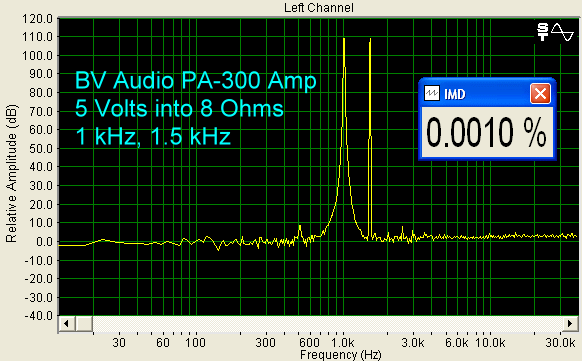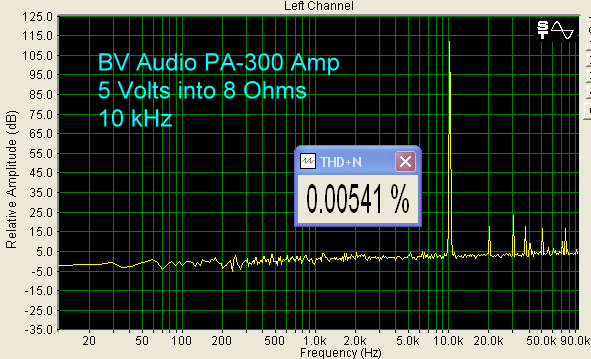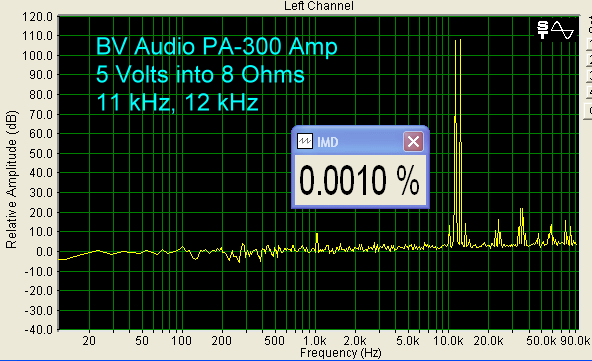|
||||||||||
|
Introduction BV Audio is one of those small companies that you just stumble onto and wonder about. That is what happened to me. I saw their ad for the PA-300 power amplifier in a magazine and thought, hmmm, this could be interesting. If you look at the photo on the left though, you might think, "Well, it sure doesn't look like much for almost $1,700 and only 110 watts per channel, and only two channels at that." But, what intrigued me is that it is fully balanced and very heavy for such modest power output. This usually means a top notch power supply, which is critical to good sound. Fully balanced will give lower noise, and this type of design raises the parts cost significantly. The PA-300 is also dual mono, with separate toroidal transformer and capacitor supply for each channel. The Design and Layout The PA-300 is one of only a few amplifiers I have seen that have XLR balanced inputs but no RCA unbalanced inputs. BV Audio obviously feels that this is a balanced amplifier, and you should take advantage of that by using balanced inputs from a balanced preamplifier such as the P1 that they make, or a different brand. The rear panel has two sets of binding posts for each channel, for connecting speakers in parallel on each channel, an additional testament to the hefty power supply. Besides the XLR inputs, there is, for each channel, an XLR output for daisy chaining the amplifier if you wish, for such things as bi-amping a speaker. There is also the convenience of a trim pot for each channel, and a remote trigger connection for auto-on power with the preamplifier. AC is through a detachable grounded plug.
The PA-300 has four gain stages (including the output devices). The power supply uses ± 56 volts on the capacitors, which consist of two 10,000 µF caps for each channel, for a total of 63 Joules of energy storage. 30 dB of negative feedback at 20 kHz are employed. This results in a very flat frequency response, as well as low harmonic distortion as shown in the bench tests below. Being fully balanced means that the signal is not carried on the ground plane, and this further helps to keep distortion low. The Sound I tested the PA-300 with a Sony SACD Player, Balanced Audio Technology VK-5i Preamplifier, Magnepan Magneplanar MG1.6/QR Speakers, Nordost RCA Interconnects from player to preamp, BetterCables XLR Interconnects from preamp to PA-300, and Analysis Plus Speaker Cables. Compared to my Balanced Audio Technology VK-75SE Tube Power Amplifier, the PA-300 was more forward in the highs, with the mids and bass about the same. The PA-300 was very clean, with no background hiss or hum, which is due in part to its fully balanced design. The Magnepans are not easy speakers to drive, but the PA-300 was fully up to the task, with plenty of dynamics. Since the PA-300 did not get very warm, I suspect that it is not biased very much into Class A, so the large power supply gives plenty of headroom.
Voices and Piano are very, very difficult things for a
hi-fi system to do well, and I was
I love to listen to classical piano while I relax in
the evening. I have a number of
On the Bench At 5 volts into 8 ohms (a few watts, typical listening level), distortion was very low, and primarily second-order (2 kHz), which is excellent.
IMD with the same load as above, was also very low.
At 10 kHz, distortion went up a bit, with the odd-ordered third harmonic at 30 kHz being predominant, but the total is still quite low.
IMD with 11 kHz and 12 kHz input, is again, quite acceptable.
The measured frequency response is within 0.15 dB all the way out to 96 kHz, which is as high as we can measure.
Conclusions The PA-300 is a top notch product. Although you can buy 100 watts x 2 for a lot less, it won't sound like this. Fully-balanced circuits are expensive, but $1,690 is not that much when you are talking about the pleasure of listening to great music with a fine audio system.
- John E. Johnson, Jr. -
|
||||||||||

